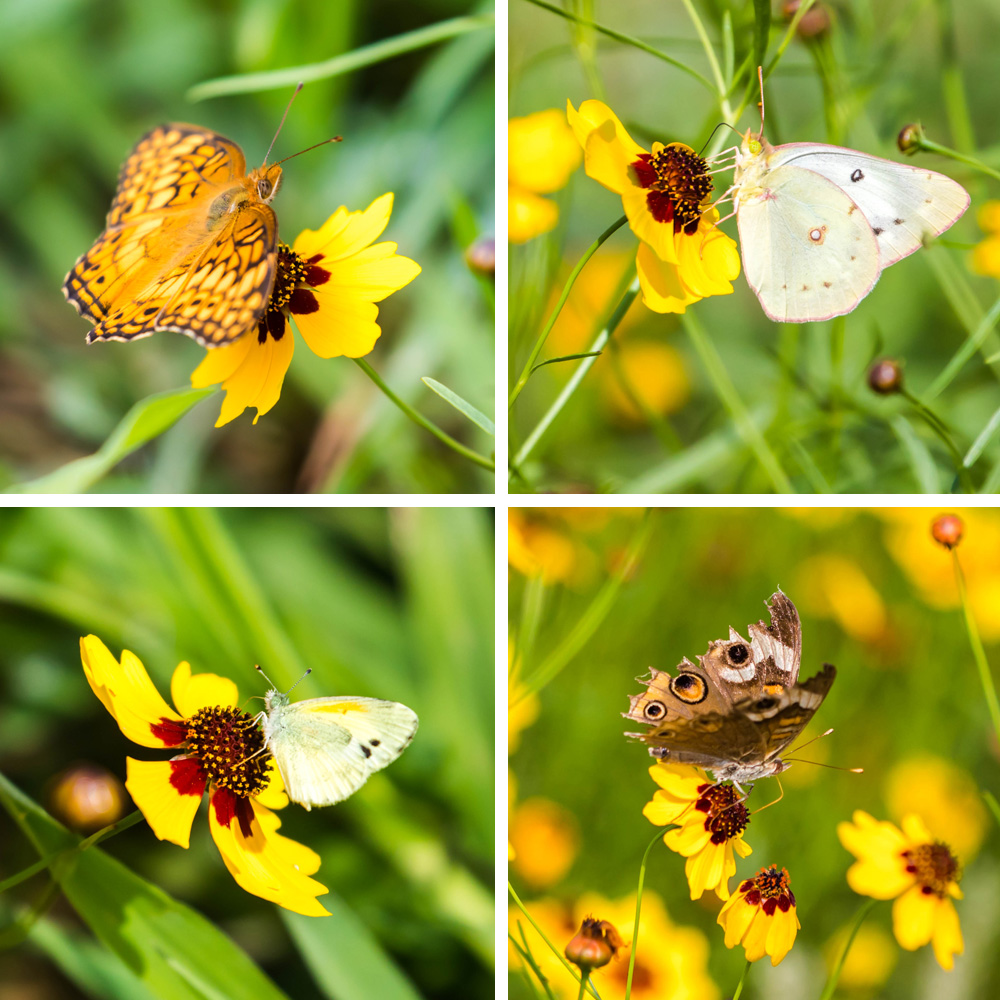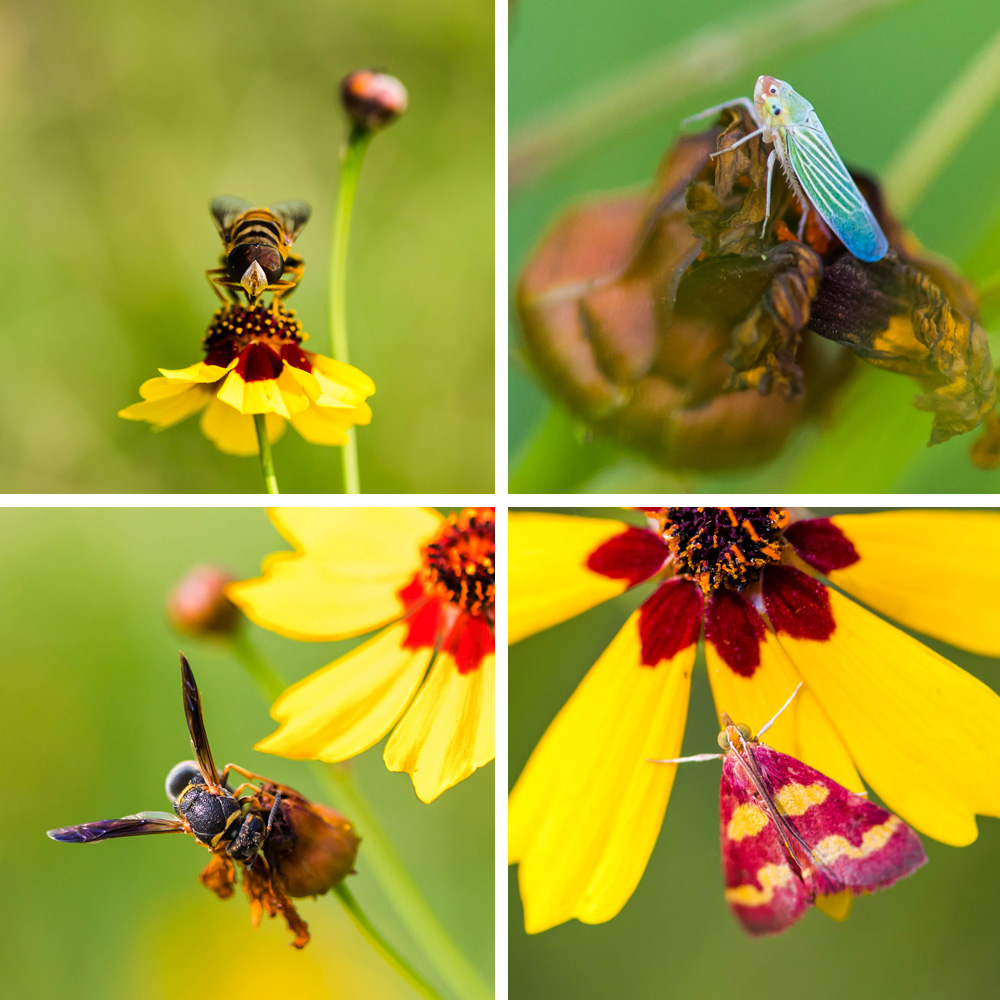NatureZen: A Field Full of Cheer
words and photos by Melissa McMasters
I love a field of sunflowers as much as the next person (although probably not as much as a bumble bee does). But for me, the bright floral stars of midsummer are not sunflowers but their much more diminutive relatives in the aster family, tickseeds.
Don’t let the unappealing name make you think these beauties exist to harbor arachnids. They’re called tickseeds because when the flowers die back, the resulting seeds bear a resemblance to ticks. Scientifically, though, they’re actually named for another arthropod: the genus Coreopsis comes from the Greek “koris” (bedbug) and “opsis” (looking). It’s still a reference to that unattractive seed, though.

I prefer the meaning tickseeds were meant to convey in Victorian floriography (the use of flowers to express emotions in an era when the open display of feelings was discouraged). Tickseeds were considered “always cheerful” and could also symbolize love at first sight.
There are more than two dozen species of Coreopsis in North America, and they’re readily available at many nurseries. The main wild-growing species in our area, plains coreopsis (C. tinctoria), is an annual plant that blooms all summer, producing a mass of seeds that create the following year’s crop.
This weekend, I spent a few hours on a slow meander through my favorite meadow near the Shelby County Community Gardens to see what other creatures were enjoying the tickseed along with me. After all, a meadow isn’t just about the flowers: it’s also about the habitat plants create for other wildlife in the area.
Native plants attract a wealth of pollinators that have evolved alongside them and benefit from the nutrients they provide. The most numerous butterfly in this field was the dainty sulphur, one of our smallest local butterflies (and one of the least interested in posing for photos!). I saw dozens of tiny, dusty-yellow individuals flitting around each other, pausing to perch on the ground, and in one case harassing a much larger orange sulphur. I saw only two actually taking nectar, which made for a dramatic five seconds of trying to focus on that little mint-green eye!

Because their hairy bodies collect pollen so efficiently, bees are incredibly effective pollinators. This meadow was full of bee activity, from the slow, methodical flight of the endangered Southern plains bumble bee to the zoom-and-spin technique of the broad-banded longhorn.

It wasn’t unusual to look up and see birds flying through the meadow or sloshing through the adjacent pond. The bill of this great egret (gaped open to let heat escape, like a dog when it pants) is the same color as the coreopsis flowers in the background.

Back on the ground, I was intrigued by a variety of minuscule insects. Northern plushback flies (top left) were everywhere. This yellow-headed leafhopper (top right) was the size of a grain of rice but still strikingly beautiful. (Talk about “names that don’t do something justice.” How about referencing its aquamarine color, or the fact that its front false eye is so convincing that I focused my camera on it instead of the real one?) One of my favorite moths, the coffee-loving pyrausta, danced between flowers for several minutes before finally landing somewhere other than underneath a petal. And I enjoyed watching the Hidalgo mason wasp, which wasn’t pollinating but instead unraveling the spent flower heads. This behavior is sometimes associated with looking for caterpillars to provision a nest, but I didn’t see this wasp come up with anything.

It’s always a treat to see a damselfly, so often negotiating its way along the surface of water, using a flower as a perch. Looking into the big bright eyes of a creature as small and delicate as a familiar bluet reminded me of first falling in love with nature.

I concluded my walk by looking to see which other birds were using this open habitat. An Eastern meadowlark was hiding amid the flowers and grass. A Northern mockingbird was carrying a grasshopper home for a snack. A great blue heron was creeping along, occasionally dipping its head low to the ground, perhaps looking for a rodent. And this handsome feral pigeon was taking a siesta on one of the paths.

This was a beautiful experience of nature right here in the city. The Victorians had it right about coreopsis flowers—when I’m around them, I’m always cheerful.




